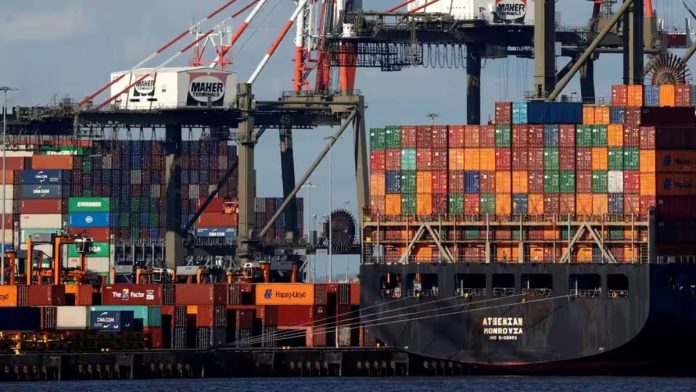NEW DELHI, Feb 23:Successful conclusion of India’s proposed trade agreements with the UK, Oman and four European nation bloc EFTA will reflect its commitment to trade liberalisation and economic integration at a time when the whole world is turning protectionist, according to a report.
Economic think tank Global Trade Research Initiative (GTRI) said the free trade agreements (FTAs) have become pivotal instruments for India’s economic expansion and integration into the world market.
These nations and the bloc are eager to finalize these agreements before the upcoming general elections, GTRI said, adding the talks are on the verge of conclusion.
Signing of these three agreements will take India’s FTA tally from 13 to 16.
Number of countries with comprehensive FTAs will go up from 22 to 28. In addition India has six small scope PTAs (preferential trade agreements).
Last pact was signed with Australia in March 2022.
“Everyone wants to do an FTA with India. The main reason for this is India’s high import duties, which make it difficult for these countries to access India’s large and rapidly growing market,” the report said.
It added that these three pacts with the UK, Oman, and the European Free Trade Association (EFTA) also reflect a shift in India’s focus from east to west in terms of preferential trade partnerships.
India’s most important FTAs are with countries located in the east of India: ASEAN, Japan, South Korea, and Australia.
It said that in all the new FTAs, India is negotiating many non-trade areas such as sustainable development, digital, IPR, labour, gender, MSME, government procurement, and competition.
“India is reluctantly changing its earlier approach to focus only on traditional market access subjects like merchandise and services trade to also include new issues. Most new issues restrict policy space for domestic regulations by forcing adoption of developed country regulations,” GTRI Founder Ajay Srivastava said.
EFTA members are Iceland, Liechtenstein, Norway, and Switzerland.
He said that the negotiations for the trade pact with EFTA were initiated in January 2008. After 20 rounds of talks, the negotiations are reaching towards conclusion.
India has a large trade deficit with EFTA, especially with Switzerland. In FY’2023, India’s imports from EFTA were significantly higher than its exports, leading to a trade deficit of USD 14.8 billion, he added.
It also said that gold, accounting for 80 per cent of India’s imports from Switzerland, is a critical factor in this agreement.
“The complexities surrounding the inclusion of gold in the FTA and its compliance with Rules of Origin conditions pose a significant challenge.
EFTA’s demand for TRIPS-plus (trade related aspects of intellectual property rights) protection for strengthening intellectual property rights in India could conflict with India’s domestic regulations and interests,” it said.
With Oman, the report said that over 6,000 India-Oman joint ventures exist in Oman with an estimated investment of over USD 7.5 billion.
Indian companies are leading investors at Sohar and Salalah Free Zones of Oman.
Srivastava said that India can hope to radically increase its exports post FTA as currently over 80 per cent of its goods enter Oman at average 5 per cent import duties, and there are not many trade barriers.
Oman’s import duty ranges from 0 to 100 per cent along with the existence of specific duties. 100 per cent duty is applicable on specific meats, wines and tobacco products.
“Government procurement is one of the limited policy tools still available to the government to incentivise domestic producers. India should not agree to stop preferential treatment to domestic suppliers in the government procurement chapter,” it said.
Further, it said that India’s trade agreement with the UK would have a positive impact on domestic export sectors such as silver, metal scrap, petroleum products, alcohol, machinery and medicine.
“India may reduce, but not eliminate, tariffs on automobiles and Scotch whiskey from the UK. For luxury cars like those from JLR, Bentley, Rolls-Royce, and Aston Martin, the UK might want zero tariffs, but India could reduce them from 100 per cent to 50 per cent. India might also consider allowing a few thousand units at a 25 per cent tariff,” he added.
India could also reduce tariffs from 150 per cent to 50 per cent over a few years, similar to what it did for Australian wines, the report said, adding that these sectors in India have had high tariff protection, even more than agricultural products.
“Significant tariff cuts, especially for wines, will help the Indian market grow,” it said, adding, “In UK too, India may face challenges in obtaining a large number of short-duration business visas for its professionals, as the UK erroneously associates it with immigration, a sensitive issue since Brexit.” (PTI)


